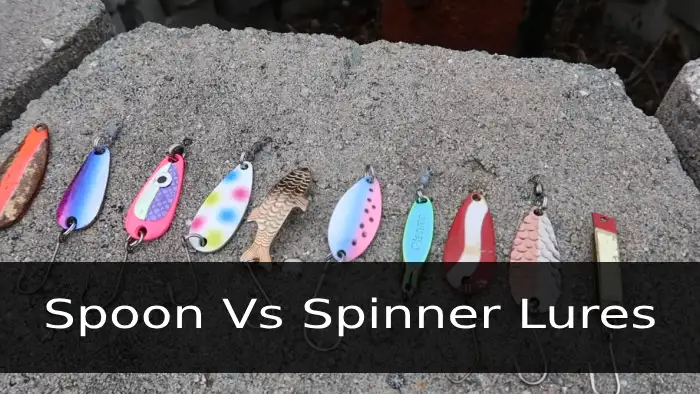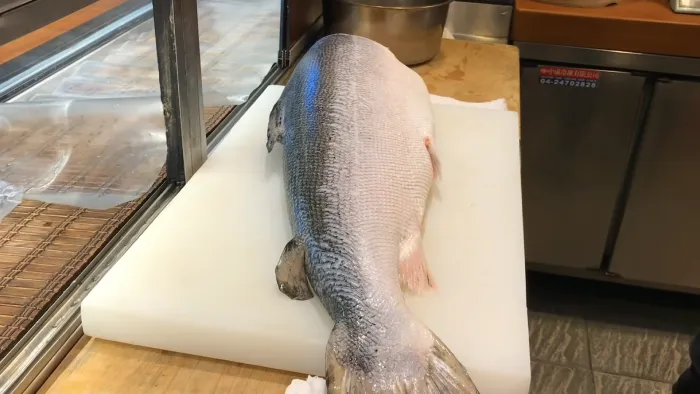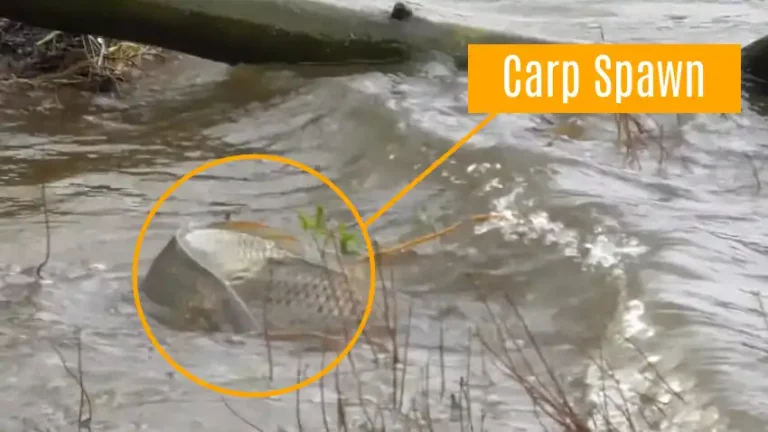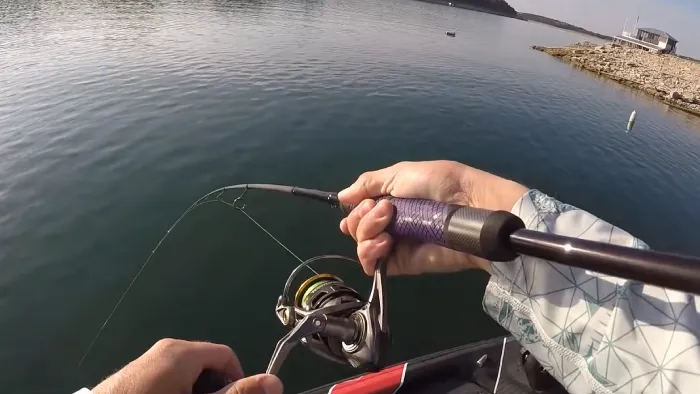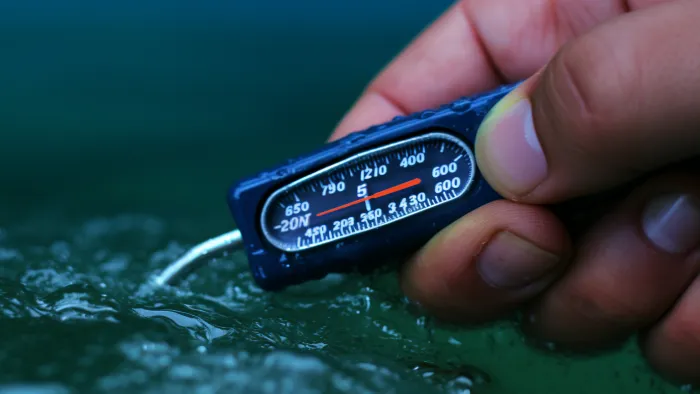Spoon Vs Spinner Lures for Fly Fishing: 6 Differences
Fly fishing with lures is an exciting and effective way to catch fish, but choosing the right lure can be confusing. Two popular types of lures are spoon and spinner lures, which have different benefits and challenges.
Spinner lures create a spinning motion in the water and imitate the movements of small prey fish. This also has a long casting distance and is suitable for still waters and flowing rivers. Conversely, spoons have a wobbling action and replicate the motion of an injured or distressed fish at different speeds.
Throughout this article, we will examine the key differences between these two popular lures and explain which is best for your fishing trip. So keep reading to determine which type of lure is best for your next fly fishing trip.
Key Differences Between Spoon & Spinner Lures for Fly Fishing
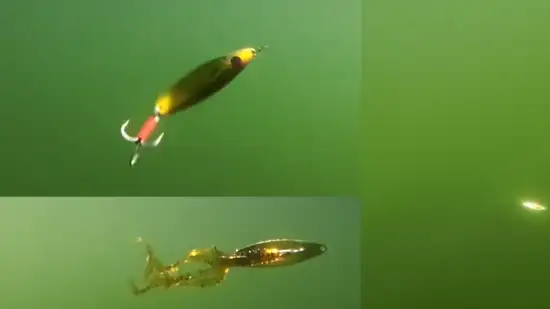
When choosing between spoon and spinner lures for fly fishing, there are several key differences to consider, such as:
- Motion and Action
- Casting and Versatility
- Visual Appeal and Vibrations
- Fish Behavior and Strikes
- Water Clarity and Conditions
- Skill Level and Ease of Use
Let’s discuss these differences in detail:
1. Motion and Action
Spinner lures rely on the spinning motion of a metal blade to imitate the movements of small prey fish. While this can effectively attract fish, it may not provide the most natural presentation.
Conversely, spoon lures have a concave, spoon-like shape that causes them to wobble and flutter as they move through the water. This erratic action closely replicates the motion of wounded or distressed fish, which can trigger the predatory instincts of larger fish species.
2. Casting and Versatility
Spinners are an excellent choice if you’re looking for a fly fishing lure that offers impressive casting distances and versatility.
These are known for their ability to cover different water depths and currents, making them suitable for still waters and flowing rivers. They are also versatile, as they can be retrieved at different speeds to mimic various prey species.
Meanwhile, spoon lures are also favored for their long-casting capabilities and versatility. With their aerodynamic shape, they are ideal for covering larger water areas.
3. Visual Appeal and Vibrations
Spinner lures’ spinning motion creates visual flashes and vibrations that attract predatory fish. As the blade spins through the water, it reflects light, creating flashes that mimic the movement of small baitfish.
These flashes catch the attention of nearby fish, triggering their predatory instincts and encouraging them to strike. In addition to the visual cues, the vibrations can be felt by fish through their lateral line system, a sensory organ that detects changes in water pressure.
Alternatively, spoon lures capitalize on their realistic wobbling and fluttering action to attract fish. While they may not produce the same visual flashes as spinner lures, their subtle yet lifelike movement and reflective surfaces entice fish to look for an easy meal.
4. Fish Behavior and Strikes
Combining the spinning blade and the spinning lure body creates a unique visual appeal that catches the attention of hungry fish. The aggressive strikes triggered by spinner lures directly result from their ability to replicate the behavior of panicked prey fish.
But spoon lures are particularly effective when imitating injured or dying baitfish. Their fluttering action closely resembles the natural movements of wounded prey, triggering a more calculated and predatory response from fish.
5. Water Clarity and Conditions
Clear water conditions are ideal for spinner lures because predatory fish can easily see their spinning blades. The clear visibility allows the fish to spot the lure from a distance, attracting their attention and enticing them to strike.
Spinning blades create flashes of light and vibrations in the water, mimicking the movements of small baitfish. This visual and auditory stimulation triggers fish’s predatory instincts, making them more likely to bite.
In contrast, spoon lures shine in murkier waters or when targeting species that rely more on vibrations and movement than visual cues. Their wobbling action can stand out even in waters with lower visibility.
6. Skill Level and Ease of Use
Spinners are a great choice for beginners due to their simplicity and ease of use. These lures offer a straightforward approach to fly fishing, making them suitable for anglers new to the sport or those seeking a more uncomplicated technique.
Meanwhile, spoon lures are not necessarily challenging but may require more finesse in manipulating the wobbling action to resemble injured prey effectively. Anglers with some experience may appreciate the control they have over the lure’s movement.
What to Consider When Selecting Fly Fishing Lures?
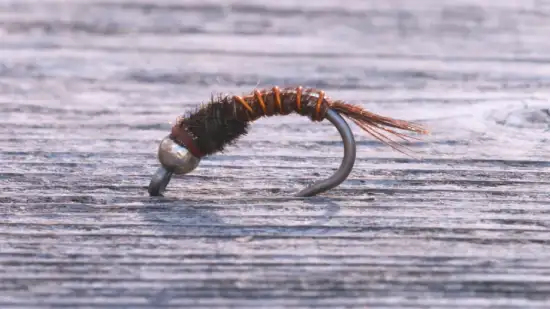
When selecting fly fishing lures, there are several key factors to consider.
1. Consider the Size and Color of the Lures
When choosing fly fishing lures, consider the size and color of the bait to attract the targeted species effectively. Matching the size and color of the lure to the fish’s prey can increase your chances of catching the desired fish.
Too large bait may startle the fish and deter them from biting, while too small bait might go unnoticed. You can create a more convincing and enticing presentation by mimicking the color of the fish’s natural prey.
Most prey items that fish consume tend to have natural colors, so opting for bait with muted tones can be beneficial, especially in a lake setting. However, in offshore applications, brightly colored bait can be effective in attracting fish from a distance.
2. Consider Fishing Location
Consider the location of your favorite fly fishing spot when selecting the right bait. The type of bait that works well in one location may not be as effective in another.
Florida’s diverse fishing landscape provides a unique opportunity for fly fishing freshwater lakes. There are some of the biggest names in fly fishing in the Florida Keys, one of the epicenters of saltwater fly fishing in the United States.
You can also choose Louisa and Spotsylvania County Reservoirs, which are two of Virginia’s largest freshwater inland reservoirs.
Artificial bait is often the way to go if you’re fishing in freshwater. Freshwater fish are more likely to respond to the real-looking movement and appearance of artificial lures.
But live bait is usually better if you’re fly fishing in saltwater. Fish in saltwater are used to eating live prey, so they’re more likely to hit live bait. Also, consider the depth of the water. Some fish are attracted to bait that is on the surface, while others prefer deeper bait.
3. Consider the Weather You Fishing
If you’re planning to fly fish, consider the weather conditions. The day’s weather patterns highly influence the behavior of fish. Fish have a keen sense of weather and react to changes in atmospheric pressure.
Before a cold front, fly fishing can be quite productive as fish tend to be more active. However, fish become lethargic and less likely to bite after a cold front passes.
The light beneath the water’s surface changes on cold and cloudy days, making darker bait more effective. Conversely, the water tends to be clearer on warm and sunny days, so choosing a lightly colored bait can increase your chances of success.
4. Consider the Fishing Season
Fishing in the early morning or late evening can yield better results in summer. As the season changes, so do fish’s behavior and feeding patterns.
In the summer, fish tend to be more active and can be found closer to the surface. This is a great time to use a spoon or a spinner to attract their attention. Spoons are metal lures that mimic the movement of a wounded fish, while spinners have rotating blades that create vibrations and flashes to entice fish.
Both lures are effective in different situations. Spoons are great for casting and retrieving, while spinners work well when trolling or fly fishing in deeper waters. Experiment and see which works best for the specific fish species and conditions you’re fishing in.
Are spoons better than spinners for fly fishing?
Spoons aren’t necessarily better than spinners for fly fishing, but they require more skill to imitate a small fish. While spinners offer an easier way to fish effectively, spoons provide the versatility that spinners lack.
When you reel in a spinner, its action naturally attracts fish. On the other hand, using a spoon requires you to master the art of creating the perfect wobble that imitates a small fish. This task can be more challenging, requiring precise movements and a deep understanding of fish behavior.
However, spoons can effectively entice many fish species once you have honed your skills. Their ability to mimic the movements of a small fish makes them an attractive option for anglers looking for a more realistic presentation.
Should spoons be fished with a swivel?
If you decide to fly fish with a spoon, it is recommended to use a swivel to prevent your line from spinning. When a spoon starts spinning in the water, it can cause your line to tangle and knot up. The use of a swivel can help eliminate this issue.
By attaching the spoon to one end of the swivel and your line to the other, the swivel acts as a pivot point. This allows the spoon to flutter naturally while preventing the line from twisting.
It is especially important when retrieving your spoon quickly or fishing in strong currents, as these factors can increase the likelihood of your spoon spinning. Therefore, it is recommended to fish with a swivel when using spoons to minimize the chances of getting knots and tangles.
What are spinner lures good for?
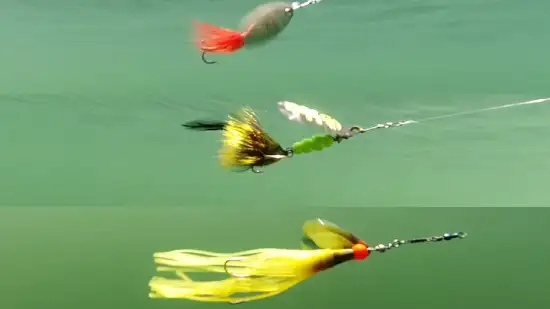
When fly fishing with spinnerbaits, you’ll find that they are excellent for attracting and catching freshwater fishes such as perch, pike, and bass.
Spinnerbaits are made up of a metal blade that spins around a wire shaft and is adorned with colorful skirts and hooks. The spinning blade creates vibrations and flashes that mimic wounded baitfish’s movement, making them irresistible to predatory fish.
Its design allows versatility in different fly fishing conditions, as they can be retrieved at various speeds and depths. They work well in clear water, murky water, and even in heavy cover.
Spinnerbaits are particularly effective in areas with vegetation, as the rotating blade can deflect off obstacles and trigger strikes. These baits are a go-to lure for many anglers due to their ability to attract a wide range of freshwater species and their adaptability in different fly fishing environments.
Spoons or Spinners Lures: Choose the Perfect One for Fly Fishing
Choosing the proper lure can make all the difference in your fly fishing success, and both spoon and spinner lures have their strengths. After diving deep into the world of fishing lures, it’s clear that the battle between spoons and spinners is fierce.
While spoons may have their flashy advantages, spinners bring their unique spin to the game. Ultimately, it comes down to the type of fish you’re targeting, the water conditions, and your preferences as an angler.
Whether you choose a spinner or a spoon lure, with the information we’ve provided, you can feel confident in your choice and be ready for a successful day of fishing.

